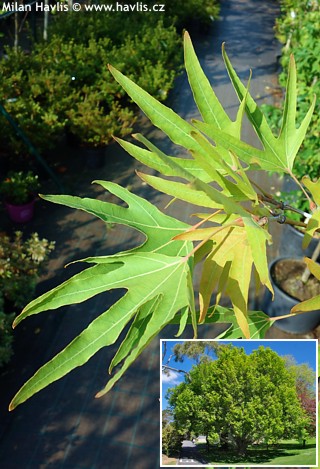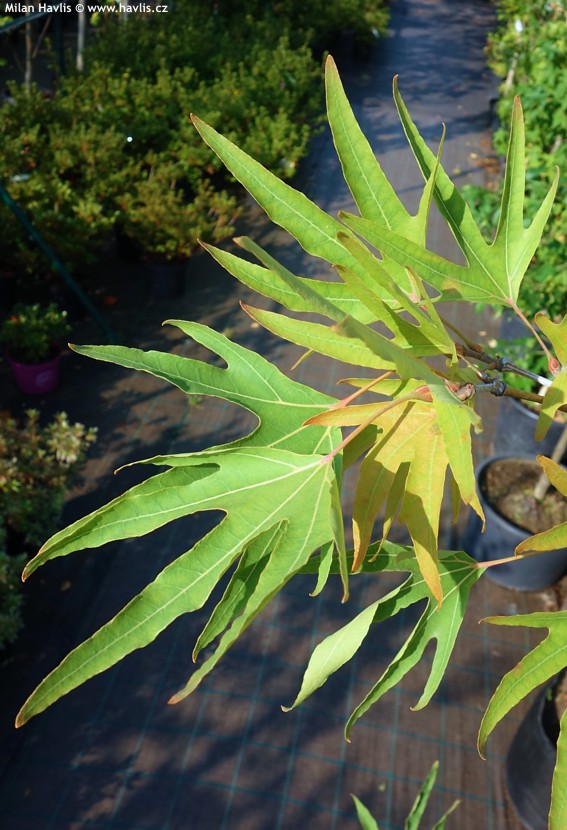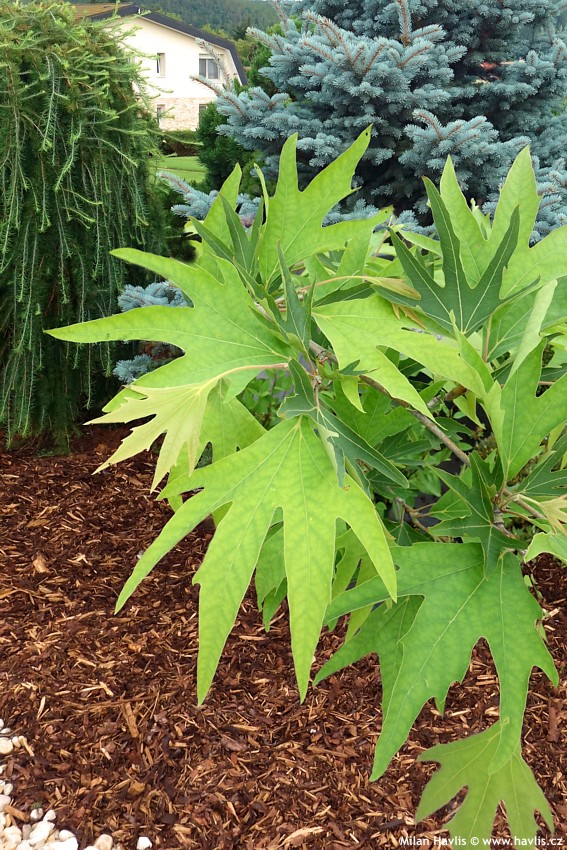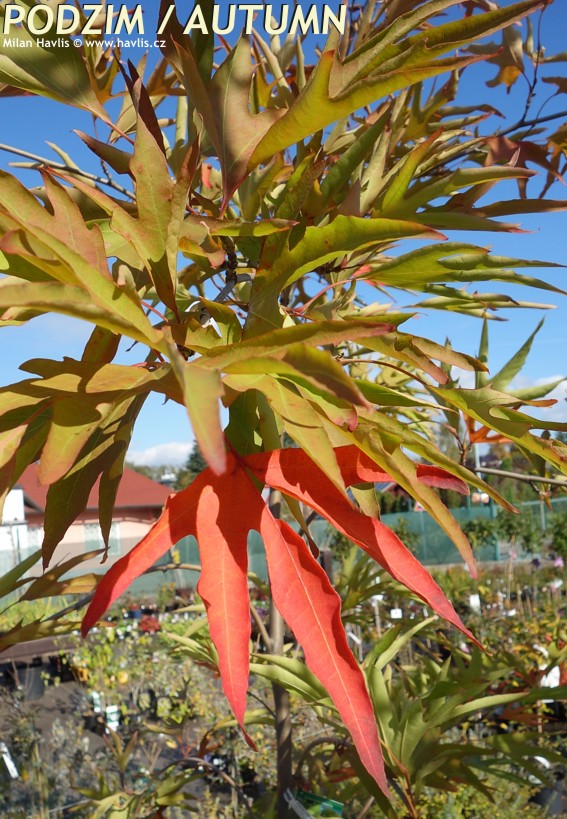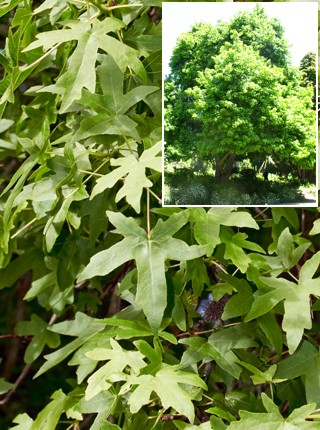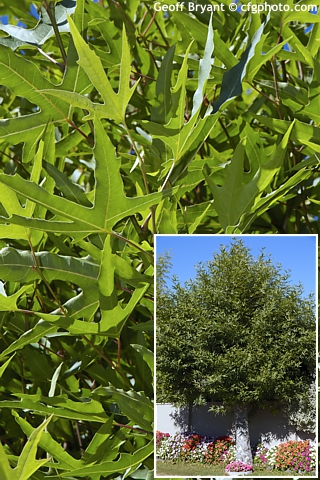Platanus orientalis 'LACINIATA' oriental plane
Platanus
Oriental plane is native to S.E.Europe where its large canopy is sought-after for a good and day-long shade. In ancient Greece Hippocrates, the father of medicine is said to have given his lectures of philosophy sitting under these magnificent trees, and students kept listening undisturbed by hot rays of sun. In other parts of the world including Northern hemisphere the plane did not become widely cultivated possibly because of its large size and resemblance to sweetgums which are much smaller and therefore more suitable for small and mid-sized gardens. In spite of its size we believe that it has features of ornamental value for which it finds its use in our climate, too.
Laciniata is a striking variety of oriental plane, believed to have been introduced to commerce by Belgian nurseryman L. de Bavay in 1847. It is easily distinguished from the species by it deeply dissected foliage. The leaves are 20-25 cm long and almost as wide, with three main tips and 2 small ones, and differ from the leaves of Digitata variety as they lack small side horns. Kids often say that the leaves look like dinosaur’s paws which we agree with. They are deciduous, rich green in summer, covered with hair that may irritate respiratory system if worked with closer to the face and in large quantity. In autumn they turn amber orange with a short period of some rich red tones. Smooth trunk is revealed by bark that peels off in large flakes on older trees. Fruits are olive green prickly spheres in hanging clusters of 2-6 that remain on the tree during the winter.
It grows fast and young, well-established trees can grow half a meter per year, making picturesque arching habit. It adapts to any soil type, but prefers deep, moist, siliceous soil. It tolerates air-pollution, summer dry spells as well as temporary flooding once established. Pruning should be done by end winter. Hardiness of oriental plane is a conflicting subject when it comes to encyclopedias from all over the world. However, we have tested and proved its hardiness down to min. -25°C (USDA zone 6) without any damage, and suppose it can withstand a couple of degrees lower for a few days.
Last update 14-09-2017; 02-12-2021

































